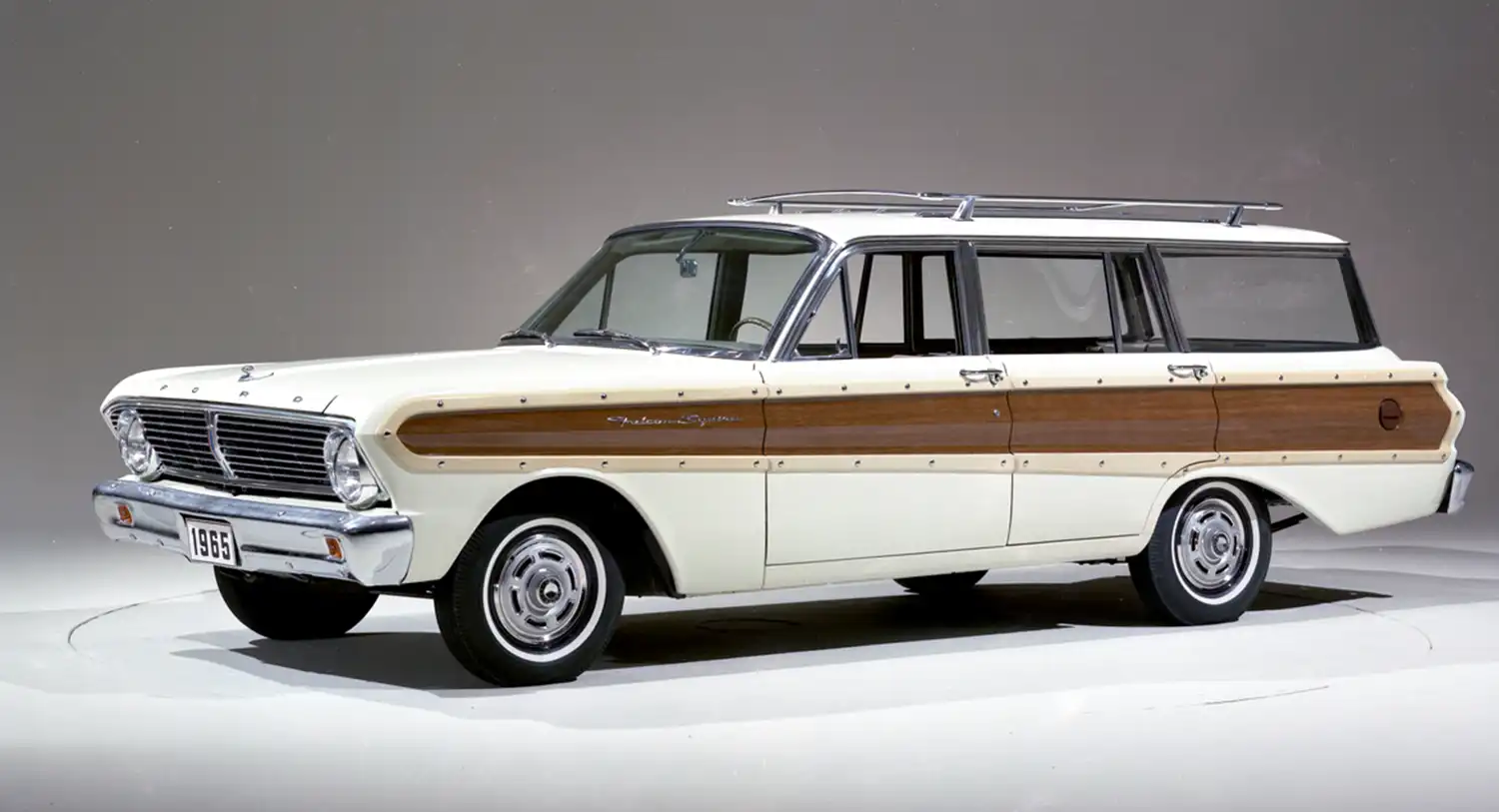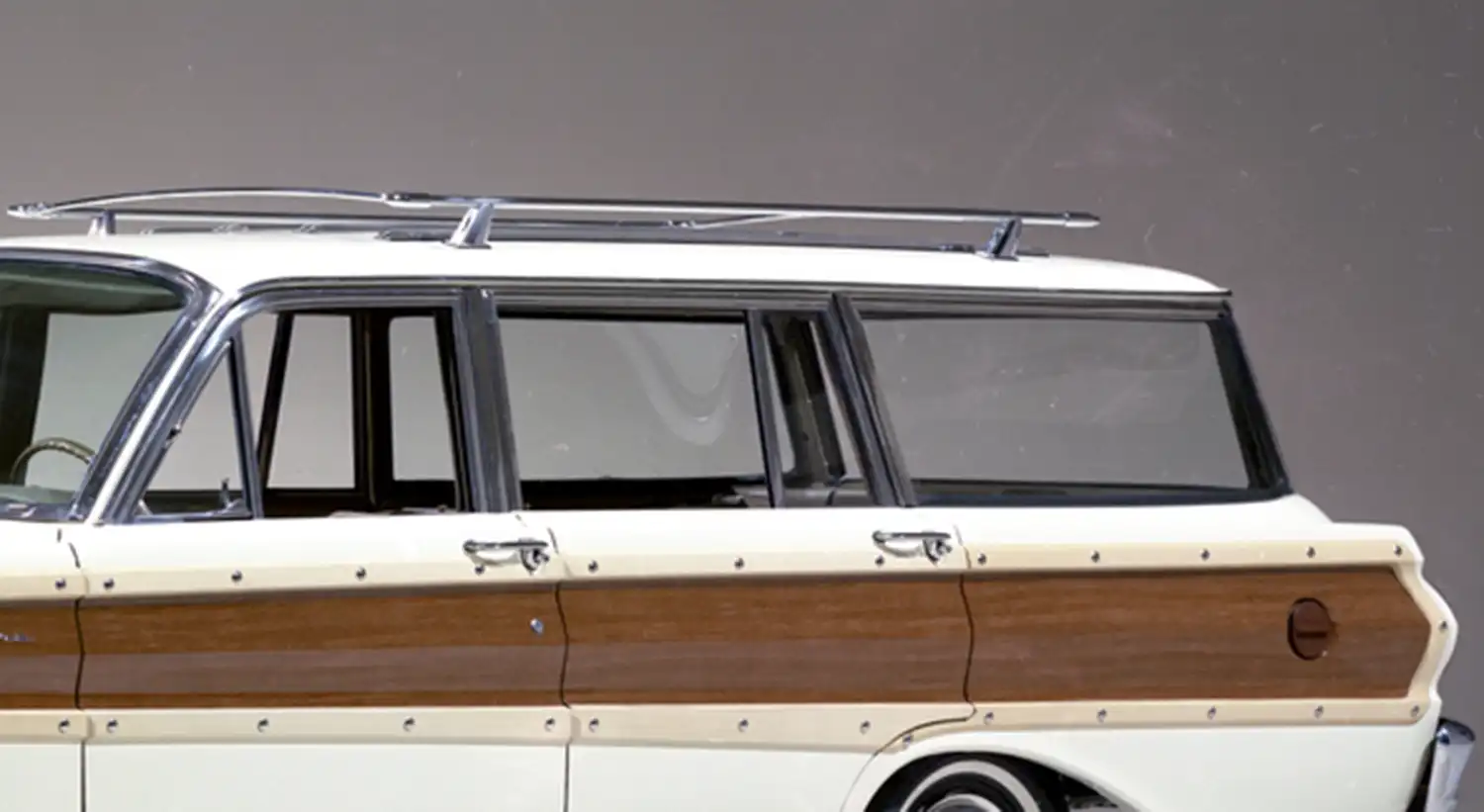
The 1965 Ford Falcon Squire station wagon stands as a nostalgic reminder of mid-1960s American family life, renowned for its practicality and distinctive styling. The Falcon, initially introduced in 1960 as Ford’s compact offering, entered its second generation in 1964, featuring more squared-off styling and increased interior space. The Squire trim level, with its signature simulated woodgrain side paneling, added a touch of upscale suburban flair to the otherwise utilitarian station wagon body style. The 1965 model year continued this successful formula, solidifying the Falcon Squire’s place as an automotive icon of its time, representing a blend of functionality and appealing aesthetics for families across the nation.
The second-generation Ford Falcon (1964-1965) represented a significant evolution from the original model, boasting a more substantial and mature design. The station wagon variant was a popular choice for families seeking a versatile vehicle for everyday tasks and longer trips. The Squire trim elevated the wagon’s appeal with the addition of simulated woodgrain appliques on the sides and tailgate, often complemented by bright trim, evoking the traditional “woody” wagons of earlier eras in a more affordable and modern package. This styling cue became instantly recognizable and strongly associated with the Falcon Squire.

Dependable Engine Options
The 1965 Ford Falcon Squire wagon offered a range of engine options to suit various needs and budgets. The base engine was typically a reliable inline six-cylinder, offering economical and dependable performance for everyday driving. For those seeking more power, Ford also offered optional V-8 engines, such as the 260 cubic inch and the more potent 289 cubic inch small-block V-8. These V-8 engines provided a noticeable increase in power and torque, enhancing acceleration and overall driving enjoyment, especially when the wagon was loaded with passengers or cargo. Transmission choices generally included a standard three-speed manual, with the option of a two-speed Fordomatic automatic transmission for added convenience. The Falcon was designed to be an affordable and practical vehicle, with a focus on reliable performance rather than outright high-performance figures.
The interior of the 1965 Ford Falcon Squire wagon was designed with practicality and family comfort in mind. The spacious cabin offered seating for up to six passengers, with a rear bench seat and often an optional forward-facing third-row seat. The station wagon body style provided ample cargo space, further enhanced by a fold-down rear seat for carrying larger items. While not overtly luxurious, the Squire trim often featured upgraded interior materials and trim compared to the base Falcon wagon, adding a touch of refinement. Durable upholstery and practical features were hallmarks of the Falcon’s interior design, catering to the demands of family use.
The 1965 Ford Falcon Squire station wagon, with its distinctive woodgrain siding and practical design, became a cultural touchstone of the mid-1960s. It represented an era of suburban growth and the increasing need for versatile family transportation. Its affordability, reliability, and appealing styling made it a popular choice for American families. Today, the Falcon Squire wagon evokes a sense of nostalgia for a simpler time and is appreciated by collectors and enthusiasts for its unique aesthetic and historical significance as a representative of its era.
Summary
- Second generation Ford Falcon (1964-1965).
- Squire trim featured distinctive simulated woodgrain side paneling.
- Offered practical family transportation.
- Base engine typically an inline six-cylinder.
- Optional 260 and 289 cubic inch V-8 engines available.
- Transmission options included three-speed manual and two-speed automatic.
- Spacious interior with seating for up to six.
- Ample cargo space with fold-down rear seat.
- A cultural icon of mid-1960s suburban life.
Disclaimer: Information provided is based on general automotive knowledge and historical data. Specific features and specifications may have varied based on production and options. Consult reliable historical sources for precise details.
Source: Ford Heritage Vault
AI Assistance: Gemini
